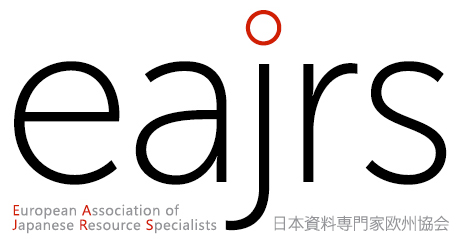![]() Koyama Noboru
Koyama Noboru
Retired
The Introduction of Japanese Manuscripts about Sword-guards (Tsuba) to Europe in the Early 20th Century
We are interested in how early Japanese books (wakosho) contributed to the development of Japanese studies in Europe. As part of the "Japonisme" craze, a lot of Japanese sword-guards (tsuba) were collected in the late 19th century as well as ukiyo-e prints, netsukes, etc. and studies on them started in early 20th century in Europe. One of earliest Japanese research works on "tsuba" was Matsumiya Kanzan's book-form manuscript which was titled as "Tōban Shinpin Zukan" (it was also titled as "Tōban Shōkan Kuketsu", "Tōban Zufu", "Tōban Zukan"). Even in Japan, modern authentic studies on "tsuba" started only around the turn of the 20th century using "wakosho" on them.
Surpassing our expectations, at least two copies of these manuscripts ("Tōban Shinpin Zukan" in Stockholm and "Tōban Zufu" in Copenhagen) were introduced to Europe by early 20th century and they were studied by European pioneers of "tsuba" expertise, such Hara Shinkichi, Justus Brinkmann, Gustav Jacoby, Georges de Tressan, Henri L. Joly, Hugo Halberstadt and others in early 20th century. A reproduction copy of "Tōban Shinpin Zukan" in Stockholm was published in London in 1912 by Henri L. Joly with an English translation. Focusing on this interesting process of the introduction of "tsuba" manuscripts into Europe, we might reflect on how Japanese studies, particularly the studies of Japanese art were developed through Japanese resources, such as early Japanese books (wakosho).
20世紀初頭における鐔に関する和古書(写本)のヨーロッパへの紹介
和古書がヨーロッパにおける日本研究の発達に対してどのように貢献したのかという点は大変興味深い話題である。“ジャポニスム”の流行として、浮世絵版画、根付などと同様に多くの鐔が19世紀の後半にヨーロッパで収集され、さらに鐔を含めたそれらの“ジャポニスム”の収集品に関する研究が20世紀初頭から開始された。鐔に関する早期の日本語研究文献の一つが松宮観山が著した写本『刀盤神品図鑑』である。同写本は『刀盤賞鑑口訣』、『刀盤図譜』、『刀盤図鑑』などとも呼称される。それらの鐔に関する和古書を使用した近代的な研究は、日本においても20世紀への変わり目頃からはじめて本格化したのである。
我々の予想を超えて、少なくとも二点のそれらの鐔に関する写本が20世紀初頭までにすでにヨーロッパに紹介されていた。一点は現在ストックホルムに保管されている『刀盤神品図鑑』であり、もう一点は現在コペンハーゲンに保管されている『刀盤図譜』である。それらはヨーロッパの鐔に関する早期の研究者である原震吉、ユストゥス・ブリンクマン、グスタフ・ヤコビー、ジョルジュ・ド・トレッサン、アンリ・L・ジョリー、フゥ—ゴ・ハルバスタッドなどによって利用された。ストックホルムの『刀盤神品図鑑』については、英語訳が付いた複製版がアンリ・L・ジョリーによって1912年にロンドンで出版された。我々は鐔に関する写本のヨーロッパへの興味深い紹介の過程に焦点を当てることによって、日本研究、特に日本美術についての研究が、和古書などの日本研究に関する資料を通じてどのように発達したのかをじっくり考えてみることができるかもしれない。
